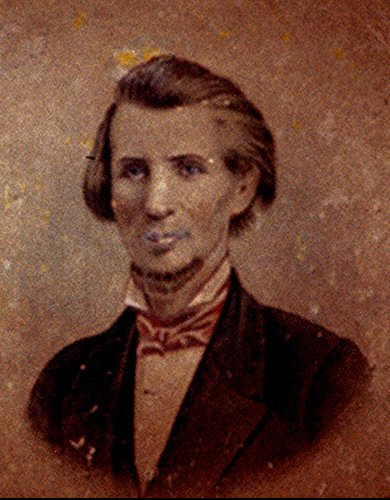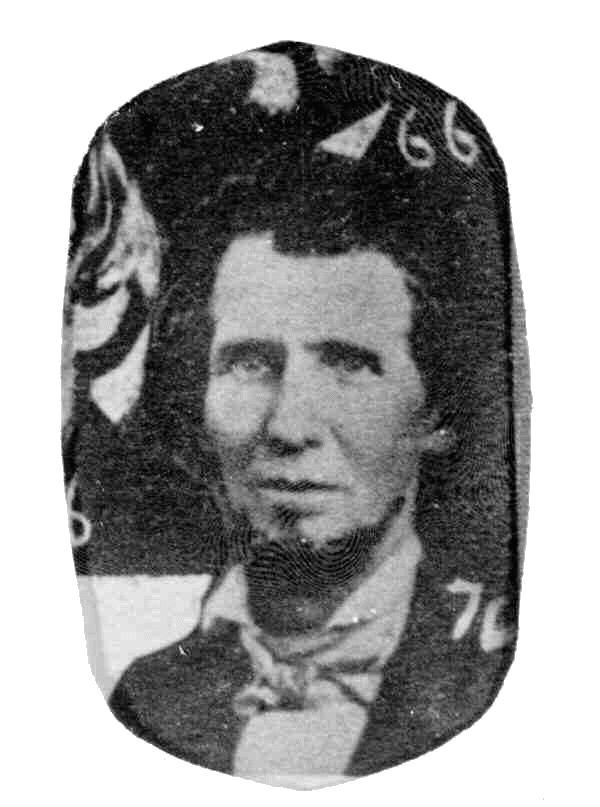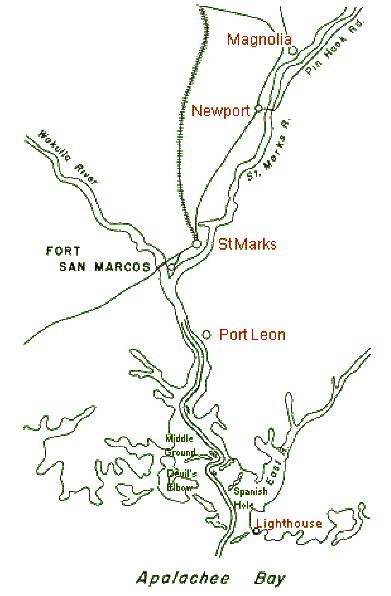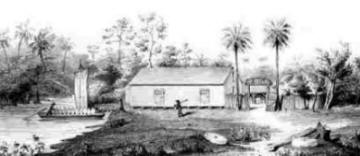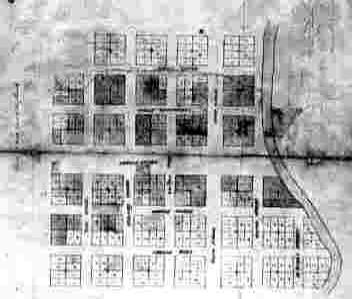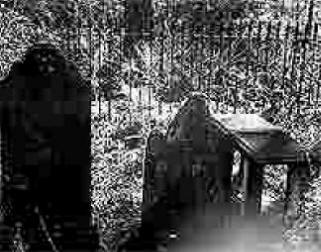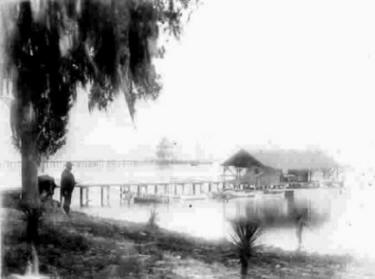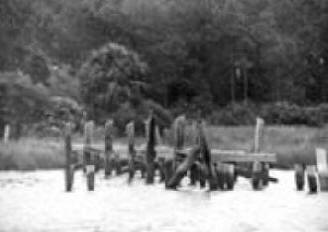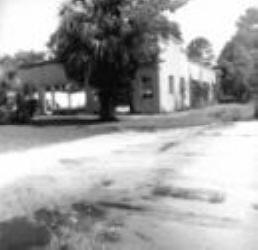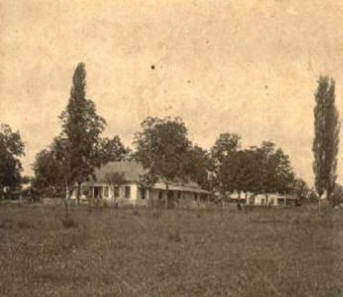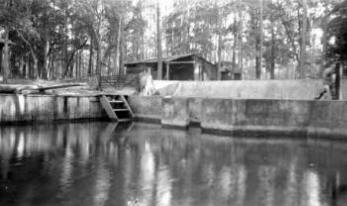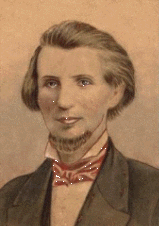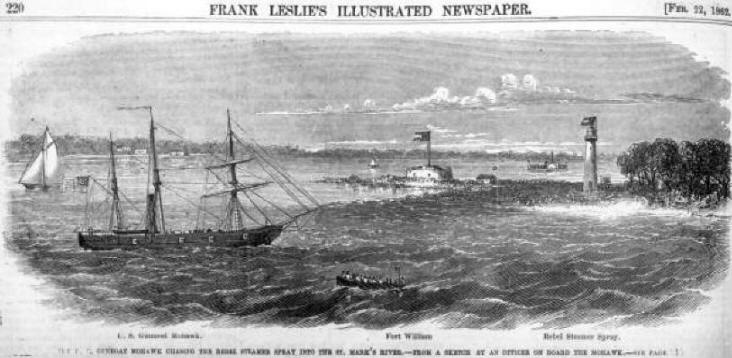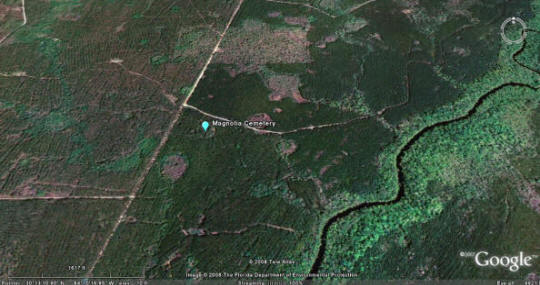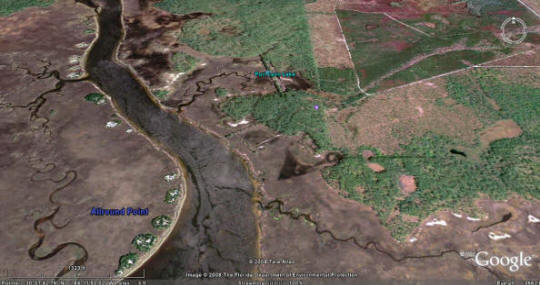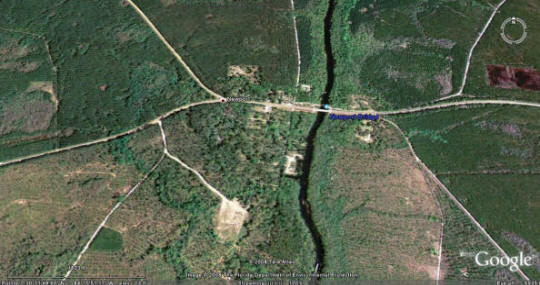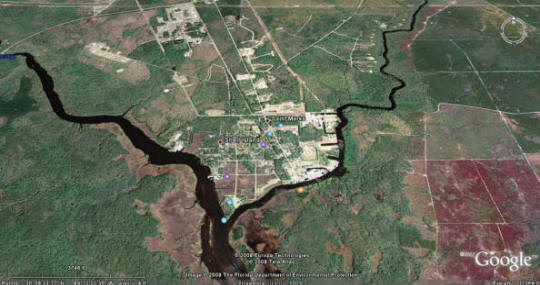|
||||||
|
||||||
|
Early History of Magnolia, Port Leon and New Port |
||||||
|
PrefaceWhen Daniel Ladd was born at Augusta, Maine, in 1817, President James Monroe was just beginning his first administration, the War of 1812 was recently settled, Europe was reacting to long years of the French Revolution and the conquests of Napoleon, and Americans were entering a period of immense economic expansion. His father, Joseph Ladd, was born at Deerfield, New Hampshire, in 1786, moved to Augusta, Maine, became a merchant, built a sawmill, opened a packet line which engaged in the coasting trade, and invested in one of the first woolen factories in the state. Ladd's maternal grandfather and his uncles on his mother's side were merchants and shippers with manufacturing interests. Having shared in the New England colonial and revolutionary experiences, the Hamlins and Ladds had become typical Yankee tradesmen and businessmen with all the enthusiasm, optimism, and self-confidence of early-nineteenth-century America. Farmers went west and south to plant crops on virgin lands, and merchants went along to supply their needs and reap the benefits. One of the most significant transformations of the period was the growth of cotton as the major staple crop of the country. The plantation system of cotton production as it was then developing provided excellent economic opportunities for energetic young men with an awareness of merchandising, a penchant for bookkeeping, and either capital to invest or good connections with the large mercantile houses who were willing to loan it. Typical New Englanders with a background of trade, the Hamlins and Ladds were early participants in the economic ferment of the period. |
|
Featuring Articles by
|
|
Daniel Ladd and the Hamlin's of
Destruction of New Port Along With How Col. Scott Destroyed New Port Daniel Ladd and the Vice President
|
|
St Marks RiverTo find markets for his products and raw cotton for his mills, Theophilus Hamlin embarked on his coasting voyage to the Gulf coast, accompanied by his five sons, John, George, Nathaniel, Weld, and Theophilus, Jr. Joseph Ladd soon expanded shipping interests in the Gulf coastal region. He was trading at St Marks in the 1820s. St Marks, originally a Spanish military fort, had long been of some importance to the British companies which traded, with the approval of the Spanish government, with the Creek Indians along the Florida Coast. Andrew Jackson had attracted attention to the area with his sensational invasion of Spanish Florida in 1818. When Florida was ceded to the United States in 1821, commercial interest in the St Marks River was immediate. Its inadequacies were also quickly discovered: short, narrow, and filled with obstructions. Countless logs and trees could be removed without serious difficulty, but there were two major natural obstructions between Apalachee Bay and the confluence of the Wakulla and St Marks rivers. Known as the Middle Ground and Devil's Elbow, the obstructions were narrow spits formed by oyster beds, high enough that occasional low tides left them dry.
Despite the river's inglorious statistics, the energetic and determined Yankees from Maine and some
of their potential competitors made it into a significant outlet for the trade of a rapidly developing
Middle Florida and South Georgia hinterland. |
|||||
|
MagnoliaAccording to the New York Star, necessity forced the town of Magnolia into existence "against the disadvantages of rapids in the river, which prevent all approach to it, but by small vessels, and those with great labor and risk". Without a drastic population change, Middle Florida would scarcely have needed a commercial port when it first became a United States territory. Tallahassee was chosen as the territorial capital in 1824 and soon developed into a permanent town. Planters in the area which now comprises eastern Gadsden, Leon, Jefferson, Wakulla, Madison, Taylor, and Hamilton counties in Florida and Thomas, Brooks, Lowndes and Decatur counties in Georgia turned to St Marks for their outlet to the sea. The Hamlins, Ladds and others who settled in Middle Florida might well have wished for a more propitious river and harbor arrangement then the St Marks offered; It was, however the only facility available, and they seem to never have doubted their ability to overcome its shortcomings. From the arrival of John, George, Nathaniel and Weld Hamlin in 1825, they were engaged in activities which resulted in the establishment of Magnolia, about seven miles above St Marks in 1827. Weld died in 1829. John, George, and Nathaniel promoted the town and saw it reach its zenith. George killed a man in a duel in 1833 and moved to Key West, where he died in 1835. John and Nathaniel, who remained at Magnolia throughout its brief ten-year existence, were the men under whose tutelage Daniel Ladd learned his trade. The Hamlins purchased land on both sides of the river from the United States government and laid out the town of Magnolia on the west bank. There were choice water lots for warehouses and wharves and the remainder of the town was to be concentrated along Broad Street running west from the river to the square. Just beyond the square was a sulphur spring which was expected to make the town into a health resort. Lots were advertised in 1827 and clearing began about July of that year. The Hamlin brothers announced the opening of their store in September, offering for sale "flour, bacon, whiskey, tobacco, nails, coffee, etc., and more to come. Several other stores followed within the next two years. Others, like the Hamlins, were general commission merchants who operated warehouses on the river, and some owned their own ships. The Hamlins owned a partnership in the 48-ton schooner "Escambia". In 1830 the Hamlin brothers and Joseph Ladd purchased the 50-ton schooner "New York" and operated it jointly. While facilities were being erected at Magnolia, other merchants built stores and warehouses at St Marks. A brisk rivalry developed between the two emerging towns for any benefit the national government would bestow. Magnolia opened the first post office in 1828. The United States Department of Treasury located the customhouse at Magnolia in 1830. Both towns benefited from construction of a lighthouse on an island near the Spanish Hole and from the removal of obstructions from the river and the placement of buoys marking the channel. The legislative council chartered the Merchants and Planters Bank of Magnolia in 1832, with an authorized capital of $200,000. The bank unfortunately failed after less than two years. A hotel offered careful attention to the needs of guests and their horses; a newspaper lasted about two years and a saw and grist mill was built on the west bank of the river. Magnolia was at its zenith when sixteen-year-old Daniel Ladd arrived in 1833 to work as an apprentice clerk in the Hamlins' commission house. In keeping his uncles' ledgers, he learned that the commission business could be an especially lucrative one, with numerous small percentage charges levied against the planters on the goods they bought as well as the produce they sold.
Magnolia passed into a state of decline; the Hamlin bothers incurred serious financial problems
and suffered from a disaster not of their own making. One of the greatest difficulties was
shallow water. It was difficult for large ships to load cargo at Magnolia since they must
lay seven miles below and lighter the cotton down. The customhouse was moved to St Marks
in December 1837. The Tallahassee Railroad Company was granted a charter in 1835 to build
a railroad to St Marks. A U.S. Supreme Court decision in 1835 denied the United States Government
had owned the land that the Hamlins had purchased from it on the west bank of the St Marks.
The question was not settled until long after Magnolia had become moribund and the land was
regarded as "not of much importance." Magnolia was virtually dead by 1838.
Nathaniel Hamlin still owned the property in 1860. Today nothing remains of the town except
a small cemetery. |
|
||||
|
Port LeonDissatisfaction with shallow water at St Marks and an unsettled dispute over title to the land at Magnolia brought a decision to extend the railroad across the St Marks river to an east bank location about three miles nearer the bay. Named Port Leon, the new site, established in 1837, was reached by the road in 1838 and lots were offered for sale immediately. Founding of the new town eight miles downriver with a railroad connection to Tallahassee, completed in 1839, was the final blow to Magnolia. The first sale of lots was held in April 1838, and another auction occurred in January 1840. Construction began almost immediately after the first sale with several warehouses ready for the fall cotton crop. Officials envisioned an unlimited future for the new town. Connected with Tallahassee by a twenty-four-mile railroad; a good wagon road had been built to Magnolia connecting with the old Pin Hook road to Monticello. The town was in turn accessible by other roads from Thomasville and Troupville in Georgia. |
|||||
|
Port Leon as a port was superior to the earlier towns. Land sales were brisk and it grew rapidly. The Hamlins moved to the new town in 1839. Daniel Ladd came with them, working one more year for his uncles before opening his own commission house in 1840. Port Leon never became the desirable residential community or the resort predicted by its promoters, but it had most of the accommodations expected of a Gulf port during its brief existence. in addition to the large warehouses and wharves along the low shore and general merchandise stores behind them on the main street, there were a number of residences for permanent inhabitants, although their appearance was the subject of criticism and derision from visitors. The Port Leon City Hotel was built shortly after the town was founded. Densmore's tavern became the rendezvous for the sailors who came in sizeable numbers during the busy fall and winter season. Despite a severe yellow fever epidemic in 1841 which took numerous lives, the new port was thriving in the early 1840s. With deeper water at its wharves, more ships were able to unload without the aid of lighters. Even for the large vessels which still had to anchor at Spanish Hole and lighter their cargo both ways, the round-trip distance was shorter by sixteen miles from Magnolia and six miles from St Marks. Although navigational aids were still imperfect, there had been vast improvements since 1828. A lighthouse that soared seventy feet skyward had been built on an island near the Spanish Hole and about nine miles from Port Leon. Three experienced, licensed river pilots lived at the lighthouse and met the vessels as they came in. Business increased at the port because cotton production expanded in the hinterland. On January 8, 1842, at the height of the shipping season, there were sixteen vessels in port; in the preceding two weeks, fourteen had arrived and fifteen had cleared. At Port Leon, Daniel Ladd completed his apprenticeship, went into business on his own, and rose rapidly to importance as a port merchant and local lender with a growing clientele among the inland cotton growers. On the highest foundation in town, a subject of comment at the time, Ladd erected a store and opened his commission house in time for the fall cotton crop. During the next two years, his business grew along with that of the entire town. |
|
||||
|
Normal tides in Apalachee Bay are not high, but the Gulf coast of Florida is so situated that the bay acts as the bottom of a funnel when southeasterly winds blow. On Wednesday morning, September 13, 1843, a southeasterly wind began blowing briskly, bringing with it a high tide. It increased in intensity until late afternoon when it subsided. About 11:00 PM it picked up again; by midnight a hurricane had inundated the town. The newspaper reported that water was ten feet deep in Port Leon at 2:00AM. The "Port Leon Commercial Gazette " later declared "Our city is in ruins". Every warehouse in town was flattened except that of Hamlin and Snell, part of which was also demolished. Daniel Ladd's store suffered least of any, because it had been built so much higher than the others. Everyone was amazed that only one young boy had lost his life at Port Leon. Estimated property losses were about $250,000. The only thing left standing on the lighthouse island was the tower. Fifteen people drowned, the only survivors were the keeper and his family. No one was killed at St Marks, but all the warehouses and stores were washed away. The railroad bridge was carried more than a mile upstream. The disaster occurred just as the cotton was beginning to arrive at the port. Ladd and a few others salvaged some of their merchandise, but new supplies had to be ordered. Hamlin and Snell announced that they would receive cotton for shipment at their old warehouse in Magnolia. |
|||||
|
New PortMeeting in the remnants of the Port Leon Hotel, the town's businessmen decided to abandon the site and locate on higher ground. Two days later, they decided the most desirable place for a new town site was two miles below old Magnolia. New Port, as it was to be called, was believed to be far enough upstream to avoid future floods such as that which had just destroyed Port Leon. This location offered high ground, fewer swamps, and beautiful bubbling springs. Agreements were reached with the Apalachicola Land Company for the new town site. The move was surprisingly rapid. Work began in early October, about three weeks after the storm, on four streets running west from the river and four others crossing from north to south. The men who moved to New Port in the fall of 1843 |
|||||
|
saw water transportation as their link with prosperity. They intended to make the town a trading center for the region formerly served by Port Leon. New Port had the same limitations which had beset both its predecessors. Larger vessels still had to anchor at Spanish Hole and lighter their freight and passengers about sixteen miles to New Port. St Marks was a few miles closer to deep water, a factor to be considered, but that was not as important as the intentions of the Tallahassee Railroad Company. Tallahassee was in a competitive position with the river towns, thus offering major competition to Daniel Ladd and other New Port businessmen. In the growing economy of the area there was enough business for several large merchants, and there was no serious problem if they were located in more than one town. But it mattered a great deal where the Tallahassee Railroad chose to build its terminal facilities on the coast. The railroad terminal would bring ships and other businesses dependent on the sea routes would locate there. The committee which founded New Port had made its site selection with this in mind. There was consternation in New Port when the decision was made to rebuild the line to St Marks and construct warehouses there. St Marks had an advantage over New Port, but it was many years before it became decisive. From 1854 to |
Abandoned Building, New Port, 1920s
|
||||
|
1856 the two towns handled roughly equal quantities of cotton. In 1859 St Marks shipped 34,686 bales and New Port 8,986 bales. Until well into the 1850s New Port was regarded as the dominant trading center. New Port inherited the distinction of county seat on February 1, 1844 and a courthouse was erected soon after. The Legislative Council named New Port as the proper place to locate the marine hospital to care for sick sailors from the numerous ships. The customhouse was located at St Marks after 1843. In early 1844, the town council named Daniel Ladd and others as trustees of the St Marks River Bridge with authority to contract for its construction. The bridge connected with another road running eastward across the Aucilla River. The old Magnolia to Tallahassee road was extended to New Port and another ran west to Sopchoppy. After the Tallahassee Railroad was rebuilt to St Marks, a three mile road was cut to that town. An epidemic of yellow fever in 1853 took about thirty lives in New Port, yet the local newspaper decried reports that the town was infected. When finally forced to admit the disease's presence, it claimed that the crisis had passed and all sick persons were recovering. Rumors of another epidemic two years later brought angry denials from the New Port Times, successor of the Gazette Destructive storms swept across Middle Florida between 1850 and 1853. It was the successive hurricanes of August 1851 and October 1852 which caused the most damage to property and to the reputations of the towns. On August 23, 1851, water twelve feet above tide level - four feet higher than in 1843, destroying most of St Marks and flooding New Port. In 1852 the Sentinel mentioned that New Port was flooded and its streets " are said to have been in good boating condition for the Spray." The Spray was a 118-ton steamer belonging to Daniel Ladd; it drew over six feet of water. It was an apocryphal story which the Sentinel later corrected. Minimal actual damage occurred. |
|||||
|
About the middle of the nineteenth century, the "plank road" came into vogue as the answer to problems of road building. The Tallahassee Railroad was a mule-drawn vehicle pulled along thin steel rails fastened to wooden runners without crossties. Never speedy under the best conditions, the train was frequently delayed when the runners slipped apart in the loose sand and the cars derailed, or the unfastened ends of the iron rails curled up and had to be held down manually to avoid derailment of the cars. against the competition of such a "railroad", a plank road to facilitate the smoother movement of heavy freight wagons appeared entirely plausible. Daniel Ladd and other commission merchants in New Port, were the proponents of plank road building. A state charter was granted the Georgia and Florida Plank Road Company, with authority to build and maintain a plank road from New Port to the Georgia line in the direction of Thomasville. The company could build toll gates and fix reasonable tolls when the first three miles were operable. In January 1851 a contract was issued to build the first 15 miles of the road northward. By June 1852 the planks were laid to the St Augustine Road. Just how far beyond the St Augustine route the plank road was built is in doubt, but it never reached Thomasville or even the Georgia line. A branch was later added to Tallahassee. Daniel Ladd became president of the Georgia and Florida Plank Road Company and operated the toll road from New Port to the Chaires crossing and the branch to Tallahassee. Although the plank road never earned a profit, it probably stimulated enough trade to repay its New Port investors indirectly. At the same time it spurred the Tallahassee Railroad to increase its efficiency. In 1856, the Pensacola and Georgia Railroad obtained controlling interest in the Tallahassee-St. Marks Railroad. The new company improved the tracks and replaced the mules with a steam locomotive that cut travel time from nearly five hours to two hours. The Georgia and Florida Plank Road Company operated until July 1858. As railroads began replacing water transportation as the prime vehicle of national trade, commerce was drawn away from the ports and through the interior of the country. When railroad fever struck Florida and the southeast in early 1850s it was several years before much action followed. But the aim of the railroad companies building across Georgia and Florida was to bind the cotton-producing region which had been served by the Gulf ports, including both St Marks and New Port, to the Atlantic ports by rail. |
|
||||
Daniel Ladd - Factor and Commission Merchant
|
During his seventeen years at New Port before the Civil war, Daniel Ladd engaged in multifarious economic activities. Yet nearly all of his efforts to promote diversified industrial development in the little river town derived directly from his primary business as a cotton factor and commission merchant. The factor was the agent of the planter, providing him with capital when necessary, marketing his produce, purchasing his supplies, and performing numerous personal services. For the planter who lived far in the interior, his factor made available to him all the necessities of the town. Ladd also operated a general retail merchandise business and engaged in several other profitable ventures at the same time. The factorage business was a high risk venture in which those who survived were handsomely rewarded. Frequent crop failures and a fluctuating market took a heavy toll of planters. Since he financed their operations, the factor assumed some of their risks and exacted a heavy price for his services. The factor and commission merchant performed numerous services for both large and small producers and exacted a percentage charge for each service. Although the percentages varied somewhat according to time and place and sometimes even between customers, a fairly standardized scale of charges evolved. The factor usually charged fifty cents per bale for selling cotton, in addition to percentage fees for storage, wharfage, primage, freight, insurance, labor, and sometimes mending broken bales. A commission of "five percent and storage" was charged on supplies purchased for the planters. Since his charges were deducted from gross receipts before any settlements were made, the factor's risks were always substantially less than those of the planter. |
|
|
As the volume of cotton and merchandise through New Port increased, Ladd's business expanded. Having established good relations with large merchants in New York, Charleston, and New Orleans, he was able to perform satisfactory services for the planters and farmers whose cotton and supplies he handled. Ladd erected a large warehouse extending partially onto a wharf built into the St Marks Rivers. On the river end of the warehouse, vessels were able to load and unload freight with a minimum of handling. At the other end there was a dock where cotton could be unloaded from wagons and merchandise loaded on them. Ladd also departed from the factors' traditional concentration on one commodity, usually cotton, and handled other products including tobacco, honey and beeswax, hides and skins, turpentine, resin, pitch, varnish and tar, and small quantities of wool and lumber. An example of the charges and their profitability for the factor was the bill sent to R. A Bradham in 1860. To an $87.39 order of coffee and flour from New Orleans, Ladd added the following charges: drayage, $1.25; New Orleans commission, $1.62; insurance, $1.42; exchange, $4.40; freight and primage, $7.57; lighterage, $1.25; commission for ordering, $2.40; exchange on bills, $3.15; Although Ladd entailed some expenses for some of these services, most of the $20.67, amounting to nearly 24% of the total purchase, was profit. There were hundreds of such orders annually and many of them were larger. There was little opportunity to bargain. All New Port merchants adopted the same schedule of charges. They were comparable to the rates charged at Apalachicola. Ladd's general merchandise store, although closely related to his commission business, operated as a separate entity. Stocked with an almost unlimited variety of goods, the store handled " everything from a needle to and anchor" and more. Notions, drugs, groceries, marine supplies, furniture, patent medicines, whiskey, ribbons, thread, tin ware, jugs, rope, salt, barreled mackerel or mullet, potatoes, cranberries carpets, India rubber belting, buggies, and countless other items were retailed in any quantity. Ladd had the innovative vision and implementing ability to see and try to take advantage of the potential opportunities in the relatively undeveloped area along the St Marks River. His initial motivation was to find a service which people wanted and provide it. The New Port cotton press was a natural outgrowth of the factorage business. To reduce transportation costs as much as possible it was worthwhile to compress the already ginned and tied bales which arrived at the port for shipment. With the steam engine and crew already assembled and not fully utilized, Ladd began lumber sawing as an adjunct to the cotton press. To keep those in his employ busy, he converted idle hands to constructive labor by sending them into the woods to cut timber. Logs were hauled to the mill with teams and wagons already available because they were used for draying cotton to and from the press. The logs were sawed into the various dimensions of building lumber. Ladd advertised freight service to Tallahassee and other locations. He established a cooperage to make barrels, hoping not only to sell them to fishermen and cane growers but also to attract other aspects of their business to New Port. Ladd explained that his Wakulla Iron Works was not operated to make money, but for the convenience of those who had engines to repair. With half a dozen of them "constantly running," he kept his shop out of necessity. It employed 30 men, used 50 tons of iron and produced about $16,000 worth of finished products. The Georgia and Florida Plank Road Company was Ladd's first corporate organization. He invested in the Tallahassee and Macon Telegraph Company. He operated a modest distillery (Turpentine) and frequently financed local distillers in a growing market for naval stores. At a time when Dr John Gorrie of nearby Apalachicola was trying to make artificial ice to cool his fever patients, Ladd was selling ice imported from New England where it was made by the natural processes. Packed in sawdust, 200 to 400 pound blocks could be shipped almost anywhere with remarkably little weight loss. In New Port he owned eight houses and lots in addition to his own ample dwelling valued at $2,715. Other developed property included both the Wakulla and Washington hotels and warehouses (worth $5, 778) in addition to his store and industrial property. The Wakulla hotel was built in 1846 as a resort featuring fine seafood and mineral baths. The Washington hotel, built about the same time, was not at a mineral spring, but offered free carriage service to and from the sulphur spring by way of the plank road. With sixty to seventy people in his employ, he permitted them to keep running store accounts just like any other customer. Nearly all of the houses he owned were rented to men who worked for him, usually in a supervisory or skilled labor capacity. Since many of the laborers required only room and board, the Washington hotel became almost a dormitory for Ladd employees. When he died in 1872, Daniel Ladd owned 5,171 acres of land and 26 New Port lots in Wakulla County alone. He had property in several other counties, Especially Jefferson, which added several hundred acres to the total. His heirs never found all of his property. |
|
|
Daniel Ladd - The "Old" and "New" South |
|
|
Daniel Ladd's thirty-nine years in Florida nearly spanned the era of plantation cotton production in the state, a period which has come to be called the "Old South". Arriving in this milieu as a youth, Ladd learned the methods of the factorage system, shared the good and bad times with his white neighbors, and died just as the plantations were giving way to other units of production and factors were being replaced by country storekeepers and bankers. Ladd brought with him ideas derived from the culture of his childhood but gradually adapted to the attitudes and values which emerged in his new environment. Ladd left an imprint on his time and place and was in turn affected by them. A reputation for honesty was essential for success in the cotton factorage business. His attitude toward competitors seems to have been tempered with a live-and-let-live quality. Despite his southern orientation on slavery and trade, Ladd was much like many others from New England or elsewhere who had migrated to the frontier in their youth. Since their family and cultural roots transcended state boundaries, they often tended to regard themselves as Americans first and citizens of a state second. After losing to the secessionists in 1861, he joined them in supporting the Confederacy and again lost to the United States government. By the end of the war he had lost most of those material possessions whose gradual accumulation had helped make him a southerner in the first place. Still a businessman of the individualist school, he accepted his straitened circumstances without grumbling. Expecting to recover his former position by the same methods which had worked for him in the past, he reopened his store and prepared the Spray for lightering cotton and merchandise up and down the St Marks River. After all, there was no reason to anticipate any insurmountable difficulty in adjusting to whatever changes occurred in the postwar period. But Ladd underestimated the problems confronting him after the war. it was not only that the railroads were finally succeeding in drawing off his trade at a time when he was financially unable to keep with the trend as he had been in the 1850s. More fundamental changes were taking place. The disappearance of the large plantations and the rise of country merchants who dealt directly with the large factors left Ladd without a role in the southern economy of the state. Ladd died just as the Old South was giving way to the New. |
|
|
The "Spray" |
|
|
Since much of the profit of cotton factorage came from the charges relate to it, a merchant whose volume was as large as Ladd's would have been missing an opportunity if he paid someone else to lighter his cargoes. In 1850 he purchased the steamer Spray "to run on the St Marks river as a tow boat and lighter, making occasional trips to Cedar Key, up the Suwannee, to Columbus, and to New Orleans." At a cost of about $15,000, the Spray was a 118-ton, side-wheel steamer built at New Albany, Indiana. With a 70-horsepower wood-burning engine, a walking beam, white smokestack, and a single mast, she steamed into St Marks in late October with a load of freight picked up at New Orleans on her way down the Mississippi from New Albany. The new vessel averaged twelve knots after reaching the open sea. Ladd had a controlling two-thirds interest in the vessel. Destined to become an integral factor in the economy of New Port and St Marks and a Civil War legend in Middle Florida, the Spray operated in the area until well into the twentieth century. |
The "Spray"
|
|
|
The U. S. Gunboat "Mohawk" chases |
|
The Spray handled most of the freight which had to be lightered between the river ports and Spanish Hole. With ships at the port averaging about 120 annually in the early 1850s and increasing steadily in number throughout the decade, the lightering business was a lucrative one. There was enough traffic to keep five pilots busy after 1846. The Spray, which drew only six and a half feet of water, had no difficulty navigating the river which was such a problem for so many of the vessels trading at St Marks and New Port. Slightly smaller than the average steamer in Gulf waters at the time, is was nevertheless capable of voyages of some distance. It carried passengers and cargo on its deck and in its holds when steaming between New Port and other Gulf ports, but much of the lightering was done on barges. With its barge attached, the Spray usually had a crew of ten, including the stevedores. It consumed about five hundred cords of wood annually and stored its own food and supplies, so much of its own space was unavailable for paying cargo. It was still valued at $10,000 in 1860 and was still hauling most of the freight between New Port and St Marks and the Spanish Hole. It still had more than a half century of active life and had not even begun its much-publicized career as a confederate gunboat. |
|
|
CSS Spray |
|
|
SPRAY Steam Gunboat; armament: 2 guns; CSS SPRAY, a small, high-pressure steamer, operated in the vicinity of the naval station at St. Marks, Fla., during 1863-1865, and was the object of much attention by the Federal forces in that vicinity. She was commanded by Lts. C. W. Hays, CSN, and H. L. Lewis CSN. SPRAY surrendered to the Federal forces in May 1865. From Florida In The Civil War, CHAPTER 2, Confederate Military History, Vol. 11: "On May 10th the Confederate steamer Spray captured off Cedar Keys the United States schooner William C. Atwater, with thirty-one men. The boat was taken to Apalachicola and converted into a blockade runner, but was recaptured off the same port in January following by the Federal steamer Itasca. Tampa bay was blockaded in July, and in August the port of St. Marks was covered by the steamer Mohawk, whose crew also obstructed the channel by sinking a captured sloop. In July the Federal steamer Massachusetts captured four schooners and sent them as prizes to Key West, but when off Cedar Keys they were recaptured by the Florida forces and the Federals in charge were sent to Tallahassee as prisoners." Excerpt from the Civil War Diary of Hiram Smith Williams: "SEPTEMBER 12, 1863 The captain of the U.S.S. Stars and Stripes reported an unsuccessful attack on the Confederate steamer Spray up the St Marks River. Two Confederate sailors were captured. In the Gulf of Mexico, the Confederate steamer, Alabama, was captured by three Federal ships, the San Jacinto, the Tennessee, and the Eugenie." |
|
Google Earth Views of Magnolia, Port Leon, New Port and St Marks as they appear today |
|
|
Magnolia |
Port Leon |
|
|
|
|
New Port |
St Marks |
|
|
|


